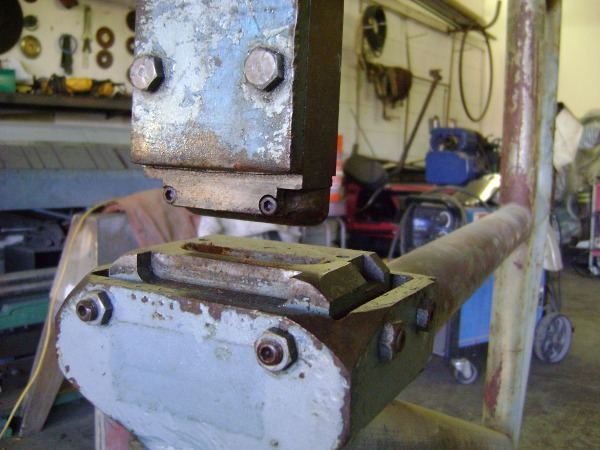(By Loren Krussow)-Louvers are among the curiosities of automotive styling features. A cut-and-formed shape pressed into sheet metal, a louver creates enough of an opening in a solid panel to enable a little air to pass through while keeping most weather and straying fingers out. The area behind is hidden more so than with regular holes or mesh and a single panel can serve as both cover and vent without the need for additional parts.
Viewed from one angle, louvers appear smooth and blend into the surrounding area; seen from another, there are rows of raw edges and just a tease from any shiny metal components located beyond. Louvers surely originated as a practical necessity, which came to be considered attractive and share the dubious distinction with wire-spoke wheels as features that are often faked when there is no call to have real ones.
A ’34 Ford’s genuine formed engine-cover slots (like its spoke wheels) are a beautiful thing to behold with the style contributing to a pricier and more-complex feel. In the ‘50s and beyond, guys commonly went to the trouble to add their own small custom louvers to automobile panels which were never so-equipped from the factory. What’s interesting is that a feature often incorporated within commercial cabinets and doors for purely functional purposes might be added, using the same tooling, onto bragging-rights-quality cars purely for the aesthetic look.
Louver tooling is not a complicated. As with the tooling for most stamped features pressed into sheetmetal, there needs to be a male die with the desired shape and a female die for it to go into with the material in between. The trick is that the louver die must also shear first to create the initial opening, which could be done by other means first but which is better accomplished in the same process. Leading edges of each die come together close enough to pinch sheet steel or aluminum between, press force increases to where the tonnage is high enough for the material to be cut, then wham, down she comes. The dies are further pushed into each other to complete the shape, and most deformation created in the surrounding area is flattened out as they bottom.
You can buy louver dies from a handful of sources, although there are enough existing ones around I doubt many new ones are sold. You can also make your own. Examination of a commercial set reveals no great intricacy involved. Then you could go truly old school using a block of wood, a section of metal rod and a hammer to create a louver if you cut a starting slot with your grinder first (it would be messy but you could do it).
The louver press, as it is termed, could be any type of press with a frame large enough to slip a hood or trunk lid into most of the way, a base and top slide for the dies to be fastened to, and a mounting that’s rigid enough to limit sideways movement between the top and bottom as they press together. It doesn’t have to be dedicated to the louver tooling, it could be set up to handle small punches and bending dies as well.
The louver press shown below is one of the earliest around from the local hot-rod scene, a commercially-made but rough-hewn device built from heavy iron tubing in the late ‘40s. The sliding action is done within bolted-together channels of steel, and the press force comes from an old Porto-Power unit. It usually took at-least two people to operate, one running the hand-pump and a second holding the panel to be louvered. Large panels were sometimes held from the ceiling on ropes and springs or a third man might be drafted to help.
Like much custom work, having louvers cut into a hood or trunk lid could be a risky thing. If there is supporting structure in the way it must be carefully removed, to be welded back in later, which might result in warping of the entire panel. There are stories of the press operator doing a whole line crooked then still demanding his money. Careless die alignment might result in excessive burrs around the cut, and in any event, all sharp edges must be removed before finishing or the paint will pull away later and the edges show rust. Variations on the common louvering can be having them pressed inward instead of out, incorporating different sizes into the same part, and changing directions such as being faced forward around the air cleaner but rearward elsewhere.
Custom louvering fell out of favor with the muscle car era but is still done when a ‘50s look is desired. They let the heat out, allow the rain in, and may or may-not be practical but always add a unique look and show real care and craftsmanship if done right.
Here are a couple of places to go press shopping:
http://www.mittlerbros.com/Louver_Press.htm
http://www.oddballkustoms.com/?p=267
http://www.madaboutmorgans.com/Handmade_Louvers.html




























